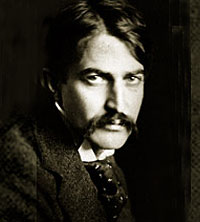A long time ago, prior to my blogging, I started reading the stories in Rudyard Kipling’s The Jungle Book. Over the last few days, I read the last four.
“Tiger, Tiger” presented another adventure for Mowgli. After being cast out of the wolf pack because of the tiger Shera Khan’s threat to take revenge on Mowgli and his adopted family, he goes to live with humans in the man village. Using his skills and instincts he has learned from the wolves in addition to his responsibilities among the humans, Mowgli ingeniously traps and kills Shera Khan. Mowgli casts the tiger’s hide onto the floor of the wolves’ meeting place in what I thought was an incredible image. One gets the idea that Mowgli doesn’t completely fit in with the jungle or the humans and finds himself having to stand alone many times, but this lonesomeness gives him a strength and wisdom that he wouldn’t otherwise have obtained.
“The White Seal” doesn’t take place in the jungle but in the Bering Sea. Kipling’s descriptions of the thousands of seals on the beach of an island brings to mind numerous National Geographic nature specials I watched as a kid. This story involves Kotick, a white seal that saves much of his fellow animals from human destruction by scouting out the ocean for a safer place to reside. He ends up being a sort of “Seal Messiah” – having a white coat adds to this effect.

“Toomai of the Elephants” could be called my favorite of these four stories. Little Toomai is the fourth generation of elephant keepers for the British army in India. He is eight years old and has a special relationship with Kala Nag (which means Black Snake), the oldest elephant in the army. Little Toomai doesn’t want to wait until he grows up to work among the elephants, but the adult men tell him that he won’t be working with the elephants until he sees them dance. This is similar to telling somebody they won’t do something until “pigs fly”. But one dark night, Kala Nag uses his large trunk to lift Little Toomai onto his back and takes him deep into the dark jungle. Toomai witnesses what the other men think is only a legend. What made this story unusual from Kipling’s other stories in this collection is that the animals don’t talk or take on human characterisitics. This gives the final scene with the elephants a powerful, almost sinister, feel. It gives the sense that Toomai’s experience is truly special.
The final story is “Servants of the Queen”. While it might not be my favorite of these stories, it was probably the most humorous. The camels, horses, elephants and cows in the Queen’s army in India all chit-chat with each other about military life. Some of them fight with each other some of them laugh with each other. One of the funnier moments is when the cows indicate to the other animals that they don’t like working with the British as well as they do the Indians – the British eat them, the Indians don’t.
I highly recommend these stories and the other ones included in The Jungle Book. I probably recommend Kipling’s short stories more than I recommend his novels.












